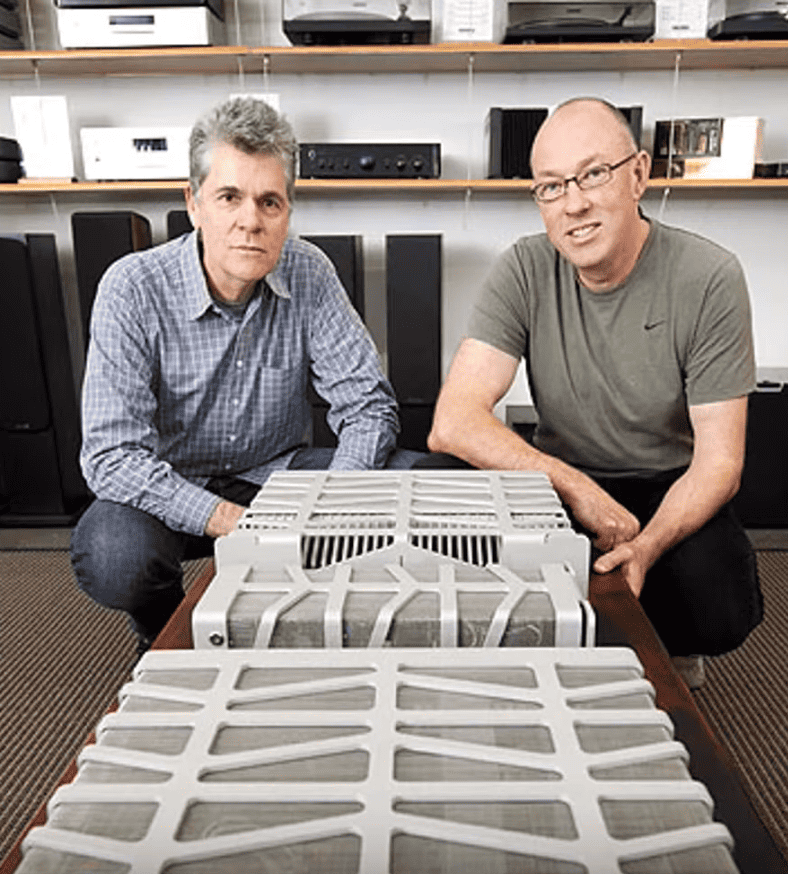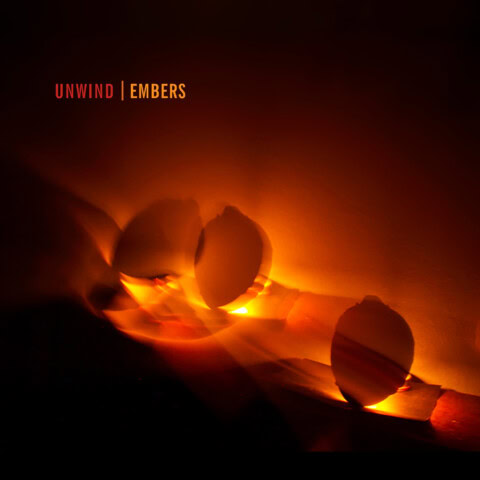Qobuz offers genuine hi-res files and a wealth of artist info. GARY STEEL on the music streaming service, which has just launched in NZ.

Everybody’s doing it, right? Despite very real concerns about the generally tiny amount of remuneration going back to artists, music streaming has quickly become the de-facto standard replacing both physical media and – in many cases – downloaded digital media.
Even a laggard like myself finds himself enticed by its wonders. I’ll still generally reach for a CD or LP for a dedicated listening experience, but out in the real world – my living room aka kidzone – it’s Spotify and portable Bluetooth speakers all the way.
Would you like to support our mission to bring intelligence, insight and great writing to entertainment journalism? Help to pay for the coffee that keeps our brains working and fingers typing just for you. Witchdoctor, entertainment for grownups. Your one-off (or monthly) $5 or $10 donation will support Witchdoctor.co.nz. and help us keep producing quality content. It’s really easy to donate, just click the ‘Become a supporter’ button below.
And even in the hallowed environment of my music room, the Spotify or Tidal apps get opened for research and first exposure listens to new albums.
Apart from those miserably low artist payments, the real reason the music streaming services have had relatively short shrift in my proper music system is that they just don’t sound that good. Spotify is reputedly trialling a hi-res plan in some countries, but meanwhile, we have to make do with 320mbps MP3s. These sound okay coming out of portable Bluetooth speakers but the truth is revealed in the more forensic environs afforded by decent amps and full-range stereo loudspeakers.

When I switch between CD and Spotify on a well-recorded album, it doesn’t exactly sound shabby, but the layers are stripped out so that it’s all rather flat and lacks depth and impact. If, like me, you listen to music for an experience, then listening to Spotify (or one of the other lower-res services) is ultimately disappointing.
For a couple of years, I subscribed to Tidal’s hi-res plan, but I found this ultimately unsatisfying as well, and once again, compared to the sound from my trusty Yamaha SACD player, it was out of the race. It turns out that Tidal use a particular so-called lossless technology called MQA (Master Quality Authenticated) that’s become very controversial. Many of my audiophile friends and those in dealerships don’t think much of it, and you’ll find very analytical videos on YouTube tearing it apart.
Amazon Music provides a supposedly hi-res service but once again, only in foreign territories, and then there’s Deezer, which is supposed to use real lossless (ie, FLAC) for its “as good as CDs” platform, but not better than CDs.
While Deezer is quietly available in New Zealand, it’s Qobuz that’s properly launched here (and in Australia) with a bit of a flourish, and it’s Qobuz that is making a buzz in audiophile circles with its real “CD quality and better” hi-res files.

I attended the launch at Neil Finn’s Roundhead Studios in Auckland last week, where Charlotte Ryan conducted a Q&A with music mastering guru Chris Chetland. During the Q&A I learned a lot of interesting facts about mastering but precious little about the Qobuz details, so I was pleased that there was also a short video presentation beamed in from the French HQ of the company. In his blurb, the Qobuz CEO explained that the service had been around since 2007 in Europe and how, apart from its legendary hi-fidelity, Qobuz took great pride in its curatorial responsibilities. We were told that the company has 15 music journalists on its payroll to make sure that there’s plenty of useful factual information available. It was also gratifying to learn that the site is easily searchable.
As of last week, the catalogue of streamable songs was only 50-something million in NZ, but we were informed that, once the necessary permissions were granted, that it would be around 70-million strong.
Afterwards, we were allowed to sip French wine around a legendary Neve desk that had been shipped some years before from New York, and which still bears the scars of an encounter with The Who drummer Keith Moon, who burned it with a cigarette.
It was nice to have a proper launch for Qobuz (one of the few since the great epidemic) but is this new in New Zealand streaming service really something to sing about?
Well, I have yet to figure out how to get it playing out of my old-fashioned stereo system, but it’s certainly a joy to use on my desktop and phone, with a very clean, clear layout and intuitive design. I’ll certainly be working towards hearing Qobuz in its full, hi-res glory but I tend to take the word of my connoisseur friends and audiophiliacs generally when they heartily recommend it. Several I know had subscribed to it through VPN’s and had been able to utilise it for some time before its NZ launch and reckon it’s great.

What would have been good at the launch would have been more detail about just how to rig it up to play at full hi-res if you’re beaming it from a laptop or a phone. The suggestion from one chap at the launch was that the built-in DACs in these devices have limitations on the bit rate. (It’s a great idea for an in-depth article, in any case, so we’ll get to work on that one!)
Meanwhile, here’s the Qobuz blurb, which gives the essential info about just how hi-res the service can be (depending on your chosen plan):
“Qobuz, the French platform for streaming and downloading high-quality music, today launched its service in New Zealand. Kiwi music lovers and audiophiles will now have access to its unique offering: high-resolution sound combined with rich editorial content.
“Founded in 2007, Qobuz’s mission is to provide music lovers and audiophiles with an unparalleled listening experience that respects the music as the artist intended. Committed to offering the purest sound quality, Qobuz offers a catalogue of millions of tracks in every genre, from both major and independent labels, available to stream and download in either CD quality (often referred to as HiFi or HD) or Hi-Res (otherwise
known as studio-quality) audio (24-Bit / up to 192 kHz).
“Qobuz makes it easy to discover, and rediscover iconic artists and emerging local and international talent. With more than half a million album reviews, artist biographies, musical booklets, interviews and music articles,
Qobuz provides context to the music of yesterday, today and tomorrow, while highlighting the artists to follow and albums – new and iconic – that are worth listening to. As a part of Qobuz’s expansion, the editorial team
has introduced a full range of playlists featuring local artists that are available to subscribers both locally and around the world.

“A pioneer of high-quality sound, Qobuz is now available in 18 countries. In France, where the platform was born, in the United Kingdom, Ireland, Germany, Austria, Spain, Italy, Belgium, Switzerland, Luxembourg, the
Netherlands, in the United States since 2019, and now, Northern Europe (Sweden, Denmark, Norway and Finland). As it continues its international expansion, from April 15, Qobuz will be available in both New Zealand
and Australia.
“Deputy CEO of Qobuz, George Fornay, said: “Since 2007, Qobuz has set a global benchmark for high-end music streaming and downloading, offering the highest quality music listening experience in the market. Far from just
a simple streaming service, Qobuz aims to bring music back to its true value by offering our subscribers a complete experience that respects the way the artist intends for their music to be enjoyed. We are absolutely
thrilled to finally bring Qobuz to New Zealand, where the expectation for a high quality listening offering such as ours exists – not just amongst consumers, but within the vibrant, diverse and incredibly talented Kiwi music industry.
“Qobuz offers different subscriptions, allowing local users to stream unlimited music in Hi-Res (often referred to as UltraHD) and CD (often referred to as HiFi or HD) quality.
Studio Premier / Studio Premier Family
Studio Premier gives users access to the entire Qobuz catalogue of Hi-Res and CD-quality albums, all available for streaming. On the Studio Premier Family subscription, family members in the same home can share up to
six accounts under one subscription.
Studio Premier – NZ$23.33 per month (total of $279.99 billed annually)
Studio Premier – NZ$29.99 per month (monthly subscription, no strings attached)
Studio Premier Family – NZ$44.16 per month (total of NZ$529.99 billed annually)
Studio Premier Family – NZ$49.99 per month (monthly subscription, no strings attached)
Studio Sublime – NZ$29.16 per month (total of NZ$349.99 billed annually)
Studio Sublime Family – NZ$62.49 per month (total of NZ$749.99 billed annually)
Studio Sublime / Studio Sublime Family
Studio Sublime gives users access to the entire Qobuz catalogue of Hi-Res and CD-quality albums, all available for streaming and download purchase with exclusive Studio Sublime discounts on Hi-Res purchases of up to
60%. On the Studio Sublime Family subscription, family members in the same home can share up to six Qobuz accounts under one subscription.















You mention “more detail about just how to rig it up to play at full hi-res if you’re beaming it from a laptop or a phone”. What works well for me is to by pass the cellphone or laptop DAC. Connect your own quality DAC (I use a Centrance HiFi M8) via USB or Lightening (must use the Apple USB 3 adapter) and plug DAC into your own hifi. The difference is terrific. For my laptop I use a gem of a device, a John Kenny MK 3 USB to SPDiff converter then into a Metrum DAC and on to my main preamp. The John Kenny device requires a Windows driver so cannot be used on Android but the sound stage is superb compared to other converters I have used. Playing with digital music has opened a whole new audiophilic addiction?